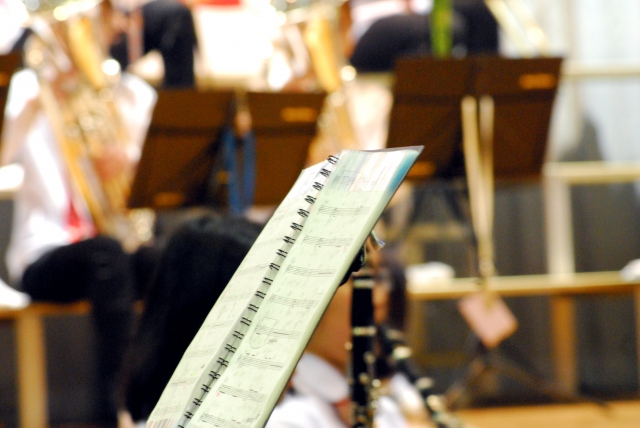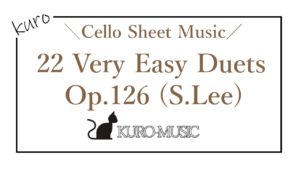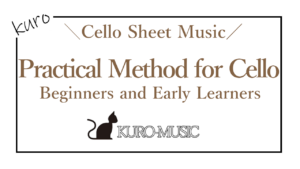Hello, I’m Kuro!
This time, let’s talk about how to speed up your sight-reading.
When I first started playing the cello, I was terrible at reading sheet music.
I would painstakingly check each note one by one, practice until I memorized the sounds, and eventually play without relying on the sheet music. Back then, simply reading notes felt like a grueling chore.
But by practicing a specific way for a year, I was able to read sheet music fluently, and after two years, I could sight-read orchestral pieces to a certain extent.
Being able to play on the spot when handed a score is undeniably cool, isn’t it?
In this guide, I’ll share the method that helped me become fluent in reading sheet music when I started learning the cello.
Key to Starting Your Practice
The most important thing in this practice is “do it every day.”
Sight-reading improvement follows a progression:
①Learn to quickly grasp rhythms.
↓ ↓
②Get used to reading notes.
↓ ↓
③Expand your field of vision.
↓ ↓
④Learn to take in and read one or two measures at a time.
The most critical step is Step 2, “Getting used to reading notes.”
Reducing resistance to reading notes requires daily exposure to them.
If you skip days, it will take significantly longer to overcome this resistance.
Let’s dive into the actual methods.
Step 1: Grasp Rhythms
Start by learning to read rhythms from sheet music.
Skip this step if you are already confident with rhythms.
Practice with a metronome by clapping out the rhythms on the score. For example, try clapping the rhythms on page 43 of Werner’s Method at tempo ♩=60.
If you succeed, increase the tempo slightly.
To improve your rhythm skills, playing rhythm games can also help. I used to play Rhythm Heaven a lot.
Note: Make sure to practice extracting rhythms from sheet music as well!
Step 2: Get Used to Reading Notes
The next step is to become comfortable reading notes. Practice with simple sheet music as follows:
①Look at the sheet music for one minute (without playing).
↓ ↓
②Slowly attempt to play it at sight.
↓ ↓
③Check any mistakes.
I practiced this daily with the lower parts from Werner’s Method, such as pages 24–25.
Play at a deliberately slow tempo where you can confidently play every note.
The key here is to build a sense of accomplishment by successfully playing every note at sight.
In the beginning, choose easy pieces you feel confident about sight-reading. You can even limit yourself to just two measures at a time.

Gradually increase the difficulty of the pieces, training yourself to read notes at sight.
Eventually, you’ll reach a point where the resistance disappears. For me, this happened after about a year and a half of consistent practice.
Once the resistance is gone, reading music becomes much easier, and your sight-reading speed will naturally improve.
Step 3: Expand Your Field of Vision
When reading sheet music becomes more manageable, start working on sight-reading techniques.
One important technique is looking a few notes ahead while playing.

For example, while playing the first note, glance at the next two or three notes ahead.
By pre-reading the notes, your sight-reading speed will improve significantly.
Initially, this might feel overwhelming, but with daily practice at a slow pace, you’ll get used to it.
Once you’ve mastered this, move on to the next step.
Step 4: Read an Entire Measure at a Time
This step is an extension of the previous ones, where you broaden your field of vision further.

Now, practice reading and playing an entire measure at once.
If you can already look three notes ahead while playing, try this next practice method!
It will significantly speed up your practice routine, so be sure to keep practicing steadily!









